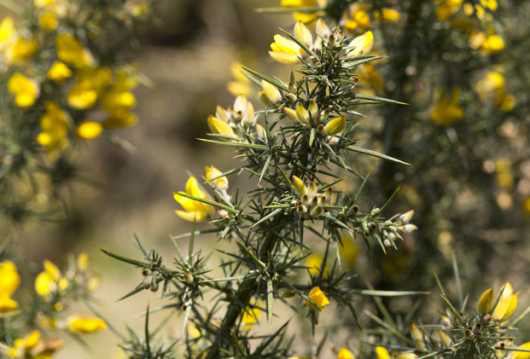How to Get Rid of Gorse

Dealing with Gorse: A Persistent Pasture Problem in New Zealand
If you own pastureland in New Zealand, chances are you’re familiar with a tough, grey-green shrub covered in painful spines and topped with bright yellow flowers — and it’s probably costing you money. Gorse infestation reduces usable grazing land and demands a heavy investment of time and labour to control.
Description and History
Gorse (Ulex europaeus) was originally introduced to New Zealand from Europe as a hedge plant. Unfortunately, the country's ideal climate allowed it to spread rapidly, and today it is classified as a major pest. Gorse is a woody perennial that can grow up to four metres tall and, if left unmanaged, will form dense, impenetrable thickets. The plant’s soft new growth quickly hardens into sharp spines, making it highly unpalatable to livestock. From May to November, gorse produces its distinctive bright yellow flowers, while seed pods develop in late spring. New shoots typically begin hardening by early autumn.
Characteristics
Gorse is incredibly resilient and can thrive under a wide range of conditions. A single plant can produce around 8,000 seeds each year, and these seeds can remain viable in the soil for up to 30 years. Several factors contribute to its aggressive spread:
-
Gorse quickly invades land where native vegetation has been cleared or where soil has been disturbed.
-
Fire triggers germination of gorse seeds.
-
Pugging — when livestock churn up wet or overgrazed land — creates ideal conditions for gorse to take hold.
Control Methods
Given its tough nature and long seed dormancy, complete eradication of gorse is difficult. Effective control usually requires a combination of manual removal, herbicide application, and good pasture management practices.
Manual Removal
Physically removing gorse is labour-intensive but can be effective, particularly for young plants. Hand-pulling works well for small patches. Larger infestations require digging, cutting, or mechanical removal. Big plants can be cut down (stumped) and treated with a herbicide gel to prevent regrowth. Burning is discouraged — it damages surrounding pasture and often triggers a fresh wave of gorse seed germination.
Herbicide Use
Spraying herbicide is a more efficient method for managing gorse on a larger scale. The best time to apply herbicide is right after the spring flowering period, when new growth is abundant and the plant is most vulnerable. It's crucial to achieve good coverage, including the older inner parts of the bush. Using a wetting agent alongside the herbicide improves penetration. To minimise pasture damage, select herbicides that target gorse specifically without harming grasses, as bare ground offers a perfect foothold for new gorse seedlings.
Pasture Management
Maintaining strong grass or native plant cover is one of the best defences against gorse invasion. Avoid overgrazing, prevent pugging, maintain good drainage, and ensure soil fertility remains high. Healthy, competitive pastures leave fewer opportunities for gorse to re-establish.
An Ongoing Battle
With New Zealand’s favourable conditions and the rugged survival traits of gorse, controlling this pest is often an ongoing challenge for farmers. However, with the right combination of herbicide treatments, pasture management, and strategic planning, it’s possible to manage gorse infestations effectively — keeping those bright yellow flowers, and their associated costs, to a minimum.
SHARE:

